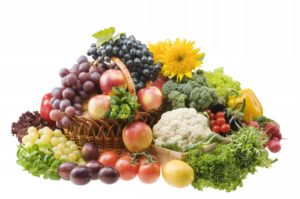July is the first full month of the summer AND the beginning of the delicious tastes of our local hom egrown fruits and vegetables.
egrown fruits and vegetables.
A couple weeks ago, we celebrated the summer solstice which brings long days, pushing growth on all kinds of plants. The vegetable gardens will make phenomenal growth with maybe the first ripe tomato appearing by August 1st. There are 15 elements, at least, that must come together to accomplish that fresh-picked tomato taste that cannot be found in those that are greenhouse grown or shipped thousands of miles. Did you know that the Cleveland area was once known as a major area for tomato production in winter with acres of plants growing in glass greenhouses? Sadly, the energy crisis of the mid 1970’s and the resulting spikes in fuel to heat the energy inefficient houses all but shut down the greenhouse tomato industry.
The fourth of July holiday is typically the last day for planting heat loving vegetables such as sweet corn, beans, squash, cucumbers, peppers and tomatoes. Later on, the shorter days and cooler nights won’t allow the plants to fully develop if planted later than the July 4th date. Your holiday picnic might include some squash, carrots, lettuce, and maybe some radishes and cucumbers for a healthy salad but the local tomato season is still a way off for most of us. And what about delicious sweet corn with your burgers and dogs? How many of you remember the rhyme, “knee high by the fourth of July”? Well, that’s why local sweet corn is still a couple weeks away. How different things are from 30+ years ago! Back then, sweet corn had to be eaten the same day as picked to be sweet or quickly chilled to prevent the sugar from converting to starch. Then too, yellow corn was the favorite with a small amount of bicolor sweet corn chosen by customers. Now the opposite is true today.
Although you might be busy celebrating the holiday or even vacationing, don’t forget about your summer gardening action list for the month:
– plant last batch of beans, sweet corn, squash, cucumbers
– start harvesting Duke and Earliblue blueberries at the beginning of the month
– protect blueberries from birds when they begin to turn blue
– apply Grub Control to prevent grubs
– cut back mums now to increase branching
– start harvesting Jersey, Bluecrop, and Berkley blueberries the middle of the month
– harvest yellow transparent apples for applesauce
– start harvesting blackberies.